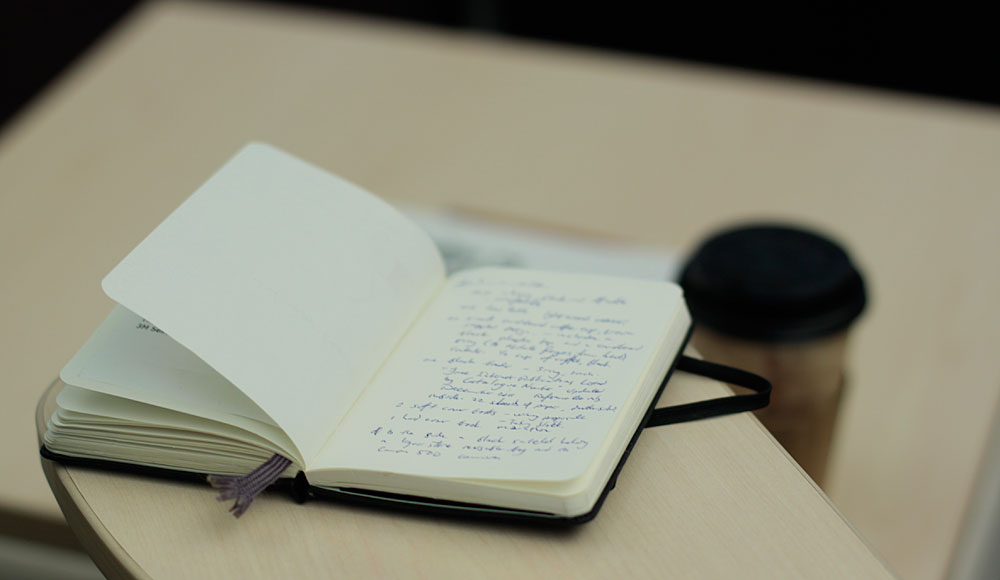Why an issue on documentary and documentation?
It’s often said that our present day—defined by bodily proximity to smart screens and instant access to content—is the most extensively documented in history. We record and distribute ourselves and our ideas so far and so widely that in just four years, we’ve gone from superstars such as Beyoncé looking to hire personal archivists to everyday people using apps such as Periscope, which—in the words of one user—“allows the broadcaster to invite their audience into their world instantaneously,” to grant anyone behind-the-scenes access to their lives. We are all potential broadcasters now, it seems. But what are we broadcasting?
Living as we are in the years following the Edward Snowden revelations, we know that documentation and the circuits of surveillance that often power its production can function as instruments of authority operating at the expense of civil liberties. But as essays in this issue from archivist Yvonne Ng and filmmaker Katy Chevigny illuminate, that power can be disrupted and re-appropriated in the service of exposing human rights abuses in war zones from Kosovo to Syria. In the hands of organizations like WITNESS and the frames of films like E-TEAM, to document is to resist.
To document can also be to attack.
Since our access to self-documentation shapes the landscape of popular culture, it seems appropriate that some of the most obvious critiques of its ubiquity are the simplest: cautionary tales circulated in pop-culture outlets themselves. For instance, in CSI: Cyber, a bullied teen speaks in a voiceover at the close of a spring episode to the dangers of our age of omni-documentation: “Your words are weapons. Be careful how you use them.”
As feminist writers from Lindy West to Zerlina Maxwell to Amanda Hess have reported, words become weapons of a particular sort when it comes to social media documentation. They and others have spoken out on the issue of rape threats in public online spaces, and recently Twitter—along with Reddit—have taken long overdue steps to address the ease with which their commitment to “openness” online enables an environment where many are made to feel unsafe. The hashtag and movement #SayHerName fights in a register even more urgent for the responsibility (and not just the right) for women of color to have their experience acknowledged and documented online.
But the fact remains that words—along with images and other forms of expressive documentation—are weapons that in the hands of Internet trolls or cyber-bullies can cause great harm. But they can also document, parody, and shake loose the tentacled choke-hold of gender repression in our culture. Visual artist Sophia Wallace, who spoke with us about her groundbreaking work Cliteracy, uses her weapons to espouse sexual citizenship and pleasure as a civil right. Visual and performance artist Ann Hirsch uses documentary forms to interrogate mass media’s framing of women’s bodies in an age when the Internet “blurs the boundaries between performed and lived identities.”
Artists such as Wallace and Hirsch remind us in stark terms that in many ways, our ability to document ourselves (and others) is powerful precisely because it leaves us vulnerable. And that power cuts both ways. The increasing technological capacities for self-documentation provide all of us with a toolkit for erasing who and what we are and replacing that identity with a filtered one—the very essence of a violent act against the self. In the case of University of Pennsylvania student Madison Holleran—according to Kate Fagan’s powerfully reported story on ESPNW—she turned those weapons inward, deliberately shielding those in her life from her worsening depression, leaving them unprepared for her suicide at age nineteen. As friends and family attested to Fagan, and according to multiple captions to photos included in the story, “Photos from Madison’s Facebook and Instagram completely concealed her reality.” Madison’s friends and others have responded by taking to social media and telling their stories with the hashtag #LifeUnfiltered.
Stories such as Madison Holleran’s reveal one of the key questions we wanted to explore in this issue: what does it mean to document a life? Michele Filgate, in her review essay of Rachel Holmes’s Life of Eleanor Marx, writes that biographers are “translators of the human experience, responsible for reconstructing a life and deciphering it for us.” For writers like Holmes, who must excavate and also move beyond archives and documented history to capture a fuller picture of the lives of women, the historical weight of who gets to be the translator is paramount. But similar concerns resonate in our contemporary moment as well. In their essays on children and social media, Priya Kumar and Tim Cigelske probe the implications of how kids’ lives are documented. Raised in the shadow of how their parents use technology, what will these kids—many of whom will come of age with a digital footprint not entirely of their own making—come to believe about the ethics of documentation?
But as Alexia Nader points out in her essay, “The Right To Be Forgotten,” there is a power dynamic between subjects and viewers looking at images online when they appear without the photographed subject’s consent (something that cannot be meaningfully obtained from children). Nader’s essay, like Judd’s, speaks to the gendered dimensions and the individual and collective responsibility for what we share and publish online.
Documentary and documentation of course long pre-date social media. The etymology of the word “document” comes from the Latin verb doceo—“to teach.” Historically, documents become the component parts of archives, the collections of material preserved by governments and institutions to tell the stories those in power wish to record. To “document” is to teach, but it is also to participate in the exchange of power and subversion inherent in identifying as an individual, a member of a group, a citizen. Archivists such as Lisa Darms, whose essay “Media Wolf” examines art objects in the David Wojnarowicz Papers at NYU’s Fales Library, knows intimately the power relations involved in the ordering and description of documents. “One of the things we do as archivists is describe documents,” she writes. “We’re careful when we describe, because we know that description can easily become prescription.” In his interview “Power to Penetrate,” Robert Darnton—media scholar, book historian, and director of Harvard’s University Library—offers a similar perspective: “the nature of the archives, the organization of the archives, determines the kind of history that will be written from them and therefore archiving is absolutely crucial.”
As an artistic genre, “documentary” summons names like Agee, Evans, and Lange. As Robert Coles writes in Doing Documentary Work, the “word documentary certainly suggests an interest in what is actual, what exists,” and as an artistic form, documentary film attempts to portray a “particular kind of life realistically.” A document is in some way a thing, an art object, a material expression of a specific moment and place in time. To be “documented” or “undocumented” are positions of empowerment and risk, agency and alienation. With document and documentary as our theme, we ask: is the duty of documentary to “change the world” or rather to “show the world”? Increasingly, activists and consumers conflate documentary with activism – and expect that political expression in film should lead to policy change on the ground. But do we lose something when we mandate that art drive change in the real world?
As award-winning filmmakers Jeff Reichert and Farihah Zaman point out in their contribution to this issue, “advocacy and art don’t necessarily cancel each other out, but there are ways in which the demands of the former can, if left unchecked, iron over the intriguing nuance that can enrich and enliven the latter.” At the same time, reflects Jen Mitas, executive director of Portland’s theater company Hand2Mouth, when documentary genres are embedded in or intertwined with fictional ones, new possibilities emerge. Her company is revisiting Gus Van Sant’s film My Own Private Idaho (1991)—itself a fiction that draws from documentary interviews—to document the transformation the city of Portland has undergone in the twenty-five years since the film presented its unique blend of “weaving real people and their stories into a fictional world.”
In recent months, the judicial and policy values of a document have come under question. In the age of smartphones—from the curated randomness of our snapshots on Instagram to the in-depth, single-issue reporting of Syria Deeply—we are documenting history as it happens. At the same, we watch institutional reality divorce itself from what we can see on the screen. For so many of us, we see and hear Eric Garner on screen and yet “reality” bends justice in a direction away from documented experience—while video footage from McKinney, Texas twists documented experience into a realm at once eerily familiar and abjectly foreign to those of us who cannot fathom its content. And still, the most feasible-seeming way for this stultifying reality to be altered is the proliferation of yet more documenting of bodies and their movements: more cameras, this logic goes, will weed out instances of racist action by police. But will it? And what are the costs?
I can’t answer that question, but with this issue, we turn to art and storytelling to plumb the depths it maps out for us as we venture forward. In Girl Zines: Making Media, Doing Feminism, Alison Piepmeier describes documenting as a “willingness to take command of language and make it work differently.” Documenting and documentary drive upstart technologies, archival preservation, knowledge production, state surveillance, popular resistance, and artistic expression. In this issue, we offer case studies of those who are making the languages of human experience “work differently.” Poets Tishon Woolcock and Fady Joudah mine the lexicon of Facebook and deploy the confined syntactic spaces of text messaging to make verse.
Fundamentally, to document is to seek, in however compromised a way, to grapple with the truth of lived experience (even if only, in the case of Maddy Holleran, to try to obscure its most painful elements). In Ami Cholia’s multimedia piece, “Sepia Saris and Faded Family Photos,” we see the work of Anusha Yadav, a photographer and designer who is trying to archive India’s personal history using old family photographs. Elsewhere, Abounaddara is an anonymous filmmaking collective that counters prevailing “mainstream” narratives of Syrian society. Alex Mayyasi, co-author of one of our very first articles, “The Spark: Starting the Revolution,” interviews members of Abbounaddara about Syrian dignity, Bashar al Assad’s propaganda, and his experience documenting the human side of war.
If documentary and documentation are weapons, lessons, and art forms, they have also been for us an opportunity to stretch ourselves intellectually and as storytellers. We hope you find in this issue an invitation to do the same.
•
 Jane Greenway Carr is the editor of The Brooklyn Quarterly. Her work has appeared in Slate, The Atlantic, Pacific Standard, TIME, and Virginia Quarterly Review. She is an ACLS Public Fellow and Contributing Editor at New America. Follow her on Twitter @janegreenway.
Jane Greenway Carr is the editor of The Brooklyn Quarterly. Her work has appeared in Slate, The Atlantic, Pacific Standard, TIME, and Virginia Quarterly Review. She is an ACLS Public Fellow and Contributing Editor at New America. Follow her on Twitter @janegreenway.

